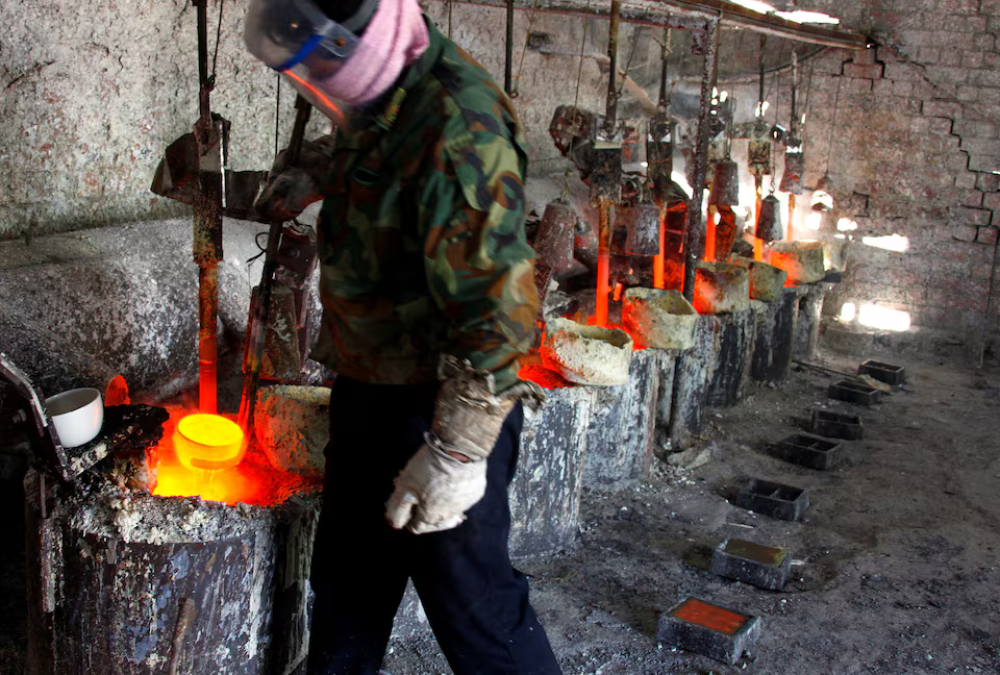
Trung Quốc siết chặt kiểm soát đất hiếm qua hợp nhất doanh nghiệp, hạn ngạch sản xuất và theo dõi chuỗi cung ứng
-
Trung Quốc đã chuyển đổi toàn bộ ngành công nghiệp đất hiếm từ một hệ thống hỗn loạn và đầy rẫy buôn lậu vào năm 2010, thành một ngành công nghiệp được kiểm soát chặt chẽ và là công cụ gây áp lực địa chính trị hiệu quả.
-
Khi xảy ra tranh chấp ngoại giao với Nhật Bản năm 2010, Trung Quốc từng hạn chế xuất khẩu đất hiếm, nhưng các hoạt động buôn lậu lớn khiến biện pháp này không phát huy hiệu quả. Ước tính có đến 40.000 tấn oxit đất hiếm bị xuất lậu vào năm 2014 – cao hơn 50% so với xuất khẩu chính thức.
-
Bắt đầu từ giữa những năm 2010, Trung Quốc tiến hành hợp nhất ngành công nghiệp. Từ hàng trăm doanh nghiệp, đến năm 2013 chỉ còn 10 công ty kiểm soát khai thác. Đến năm 2025, toàn bộ ngành khai thác và chế biến thuộc về hai tập đoàn nhà nước: China Rare Earth Group và China Northern Rare Earth Group High-Tech.
-
Mục tiêu của hợp nhất không chỉ nhằm tăng kiểm soát mà còn để giảm thiểu tác hại môi trường từ khai thác lậu và không kiểm soát.
-
Ngược lại, ngành sản xuất nam châm đất hiếm – khâu hạ nguồn – vẫn phân mảnh, với hàng chục doanh nghiệp hoạt động như JL Mag Rare-Earth và Ningbo Yunsheng. Tuy nhiên, từ tháng 6/2025, Trung Quốc đã triển khai hệ thống theo dõi bắt buộc cho ngành này, yêu cầu cung cấp thông tin chi tiết về khách hàng và giao dịch, hướng đến kiểm soát toàn bộ chuỗi cung ứng.
-
Trung Quốc áp dụng hệ thống hạn ngạch sản xuất từ năm 2006 để kiểm soát sản lượng khai thác, luyện kim và tách chiết. Ban đầu có nhiều doanh nghiệp được cấp, nhưng từ 2024 chỉ còn hai tập đoàn nhà nước đủ điều kiện tiếp cận hạn ngạch.
-
Tốc độ tăng trưởng hạn ngạch khai thác đã chậm lại đáng kể: năm 2023 tăng 21,4% nhưng năm 2024 chỉ còn 5,9%. Năm 2025, các nhà phân tích dự đoán tăng trưởng sẽ giữ nguyên hoặc chỉ tăng tối đa 5%.
-
Ngoài ra, Trung Quốc đã cấm xuất khẩu công nghệ khai thác và tách chiết đất hiếm từ lâu. Đến cuối năm 2023, lệnh cấm này mở rộng sang cả công nghệ sản xuất nam châm đất hiếm – thành phần cốt lõi trong xe điện và năng lượng tái tạo.
📌 Từ năm 2010 đến 2025, Trung Quốc đã biến ngành đất hiếm từ hỗn loạn thành ngành chiến lược, với 2 tập đoàn nhà nước kiểm soát toàn bộ khai thác và tinh chế. Hạn ngạch sản xuất ngày càng siết chặt, tăng trưởng giảm từ 21,4% (2023) xuống 5,9% (2024), cùng với lệnh cấm xuất khẩu công nghệ sản xuất nam châm. Trung Quốc hiện không chỉ kiểm soát nguồn cung mà còn chi phối chuỗi giá trị toàn cầu.
https://www.reuters.com/world/china/how-china-tightened-its-grip-over-its-rare-earth-sector-2025-07-07/
How China tightened its grip over its rare earth sector
CONSOLIDATION
QUOTAS
Thảo luận
Follow Us
Tin phổ biến



